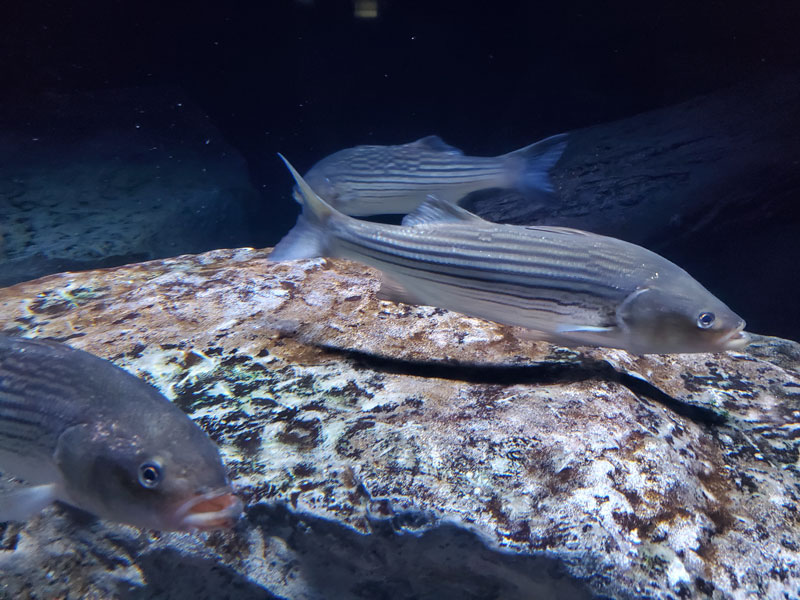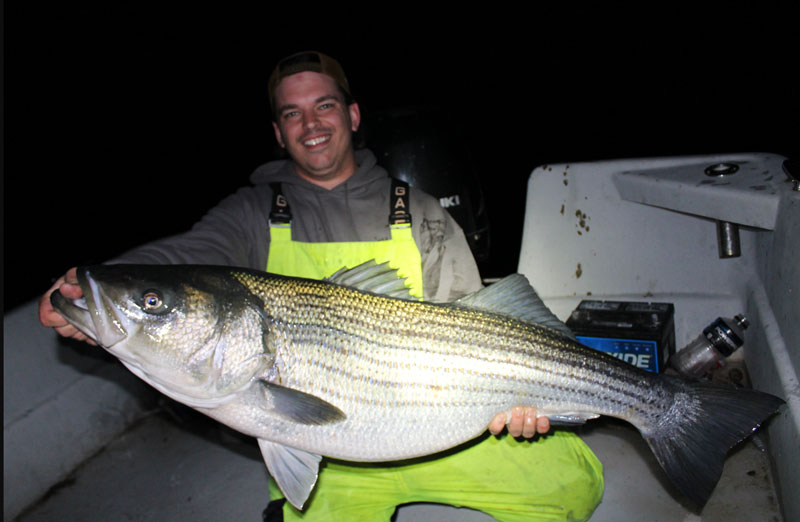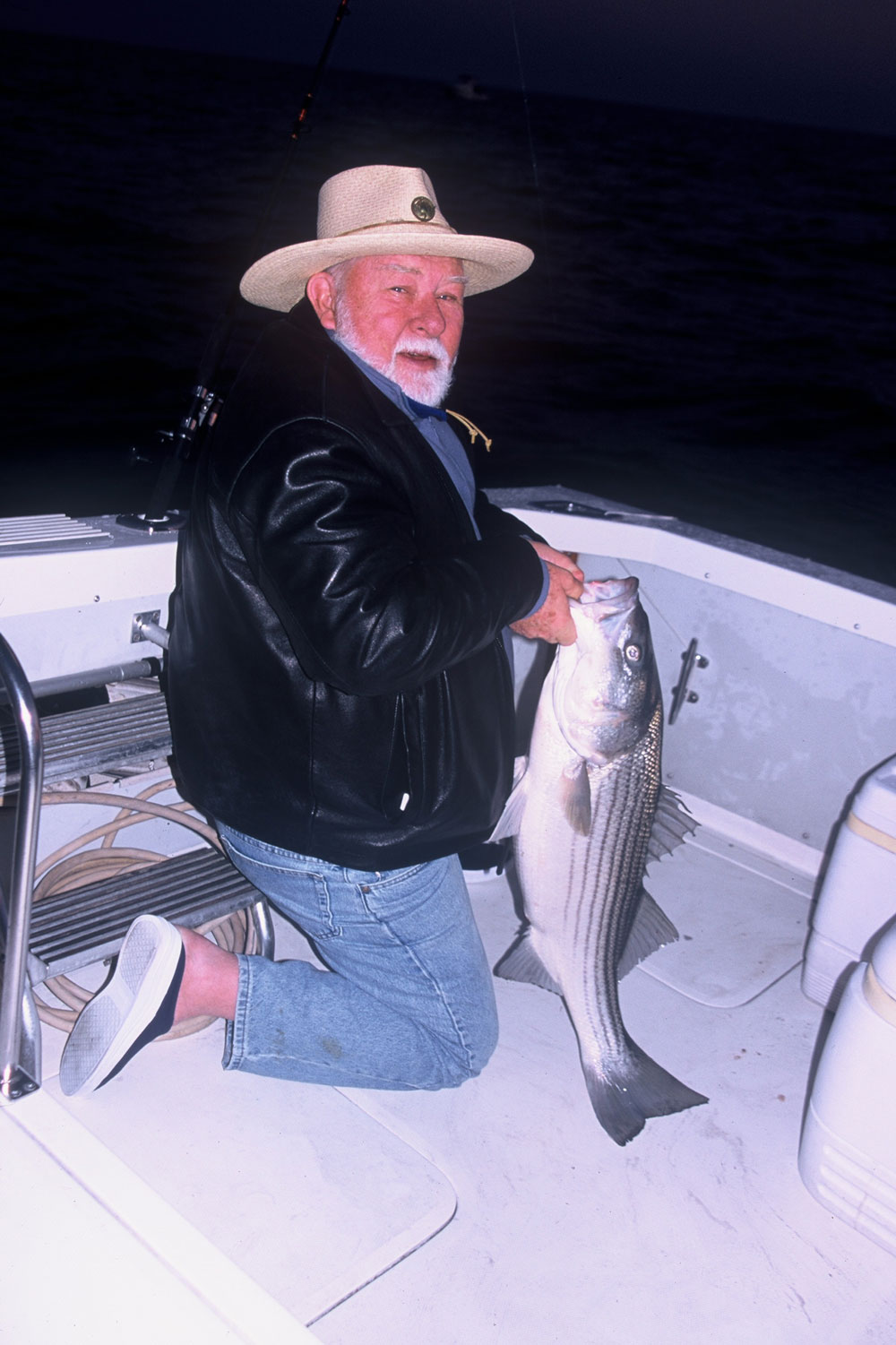During the dog-days of summer fishing can grow tough, and chumming for striped bass, jigging for rockfish (note: stripers are called "rockfish" in much of the Mid-Atlantic region), and even live-lining with spot can fall flat. In this situation, night is likely the best time to fish. In fact, night fishing can become the number-one most effective tactic for filling your fishbox when a heat wave set in. Check out our video on night fishing or stripers, before we dig into the details.
Night Fishing Gear
Obviously, night fishing requires a whole set of unique gear. And we don’t just mean flashlights. (Though we would like to point out that you’ll need your hands for tying knots and baiting hooks, so get a light that clips to your hat brim, or a headlamp). You’ll also need night lights for your boat—the more light you can put on the water the more bait you’ll attract, and the more bait you attract the more big fish you’ll catch. White halogens work, but green fluorescent lights like the Hydro Glow are truly amazing. The tube of light will throw a halo of green 30’ around the boat, and menhaden are attracted to it like moths to a porch light. That brings us to another gear requirement, a cast net. When the bunker swarm around your light, one throw of the net provides a livewell full of prime baits for live-lining. A final tool all night anglers need is a good handheld spotlight. You shouldn’t cruise with it on, since it will destroy your night vision. But a strong spotlight is invaluable when you’re trying to find channel markers and other landmarks.

Finding Night Fishing Hotspots
Points at river mouths and points with sharp drops and shell bottoms, channel edges, and bridges with lightlines are all good places to look for fish. As usual, location is key—you’ll do best if you find a well-lighted bridge with relatively deep water in the channel (at least 12’ or 15’) and a decent current. Boat positioning is even more key when hunting stripers at a bridges’ light-line. You’ll want to anchor up-current (or up-wind, if there is little or no current) within easy casting distance of the light-line where it crosses over the deepest part of the channel under the bridge. If you’re at a bridge over very deep water, instead of looking for the intersection with the channel, find an area where depth transitions from about 20’ to 12’. Essentially, what you’re looking for is close access to water over 10’ with a lightline that crosses into a shallower zone, because stripers will frequent these intersections during all cycles of the tide. After identifying this type of spot, set out your lights and adjust your boat’s distance from the bridge’s light-line until the light-line you create with your own lights intersects with the one made by the bridge.
Fooling the Fish
Now that you’re in the ideal spot, you can start casting. Jigs, stick-baits, and diving plugs may all prove effective, but remember that dark colors usually work best at night. Purple, dark red, and black are prime picks. (See our article Color Coded for a primer on choosing lure colors in general). As you cast your lures keep an eye on your lights because soon, all that bait will show up. Once it does you can fill the livewell and shift to live-lining — by far the most effective night fishing technique.

Rig up with a light leader and a thin wire hook (bunker don’t do well, if you skewer them with a thick, heavy hook), and gently toss your bait just beyond the light-line intersections. Stripers will usually feed a few feet over on the dark side of the light-line, so if the bunker swims back into the fully lighted area (which they tend to do), reel it up and toss it back out again. While the bait’s in the prime zone leave your reels in freespool, so the stripers can grab them and run without feeling any tension.
Just think of it: no blazing sun, no crowds to contend with, and fish in the cooler. There’s no doubt about it—during the summer night time is the right time to go fishing, and it’ll take care of those summer doldrums in no time.

Editor's note: This article was originally published in March of 2017 and was last updated May 8, 2024.